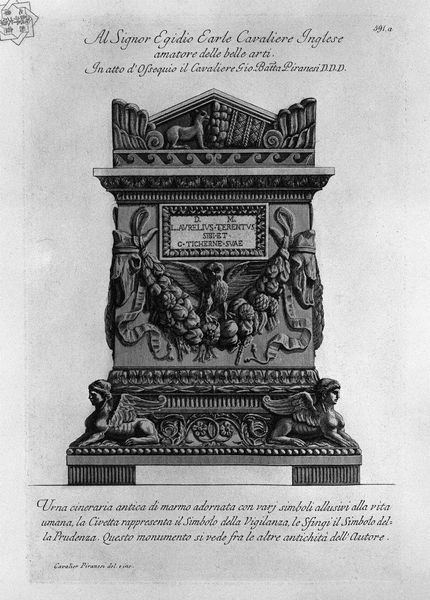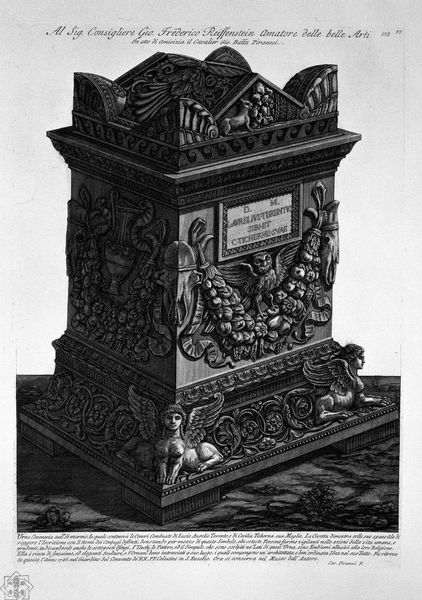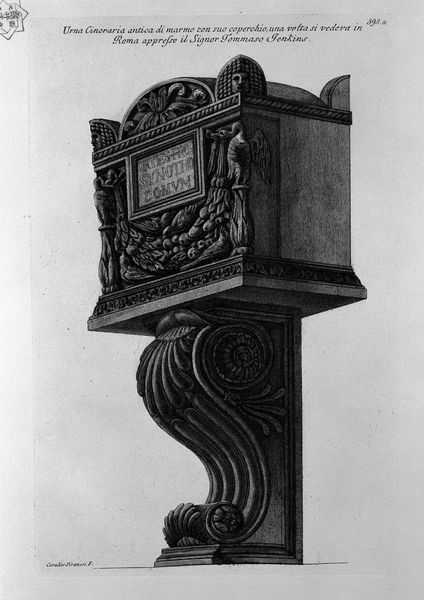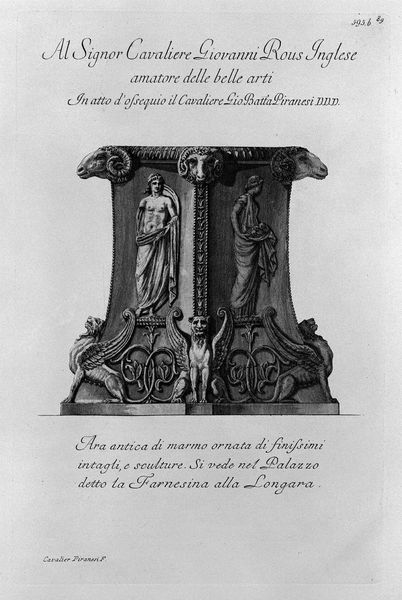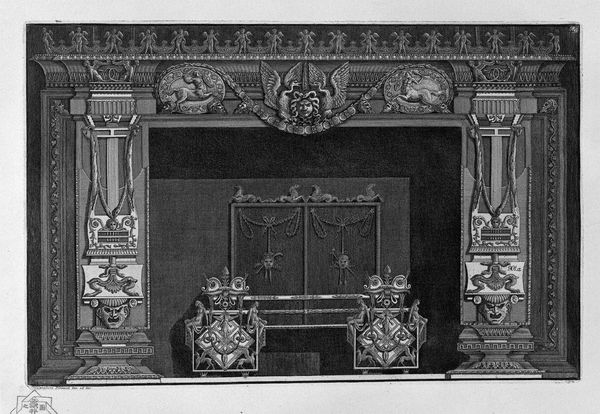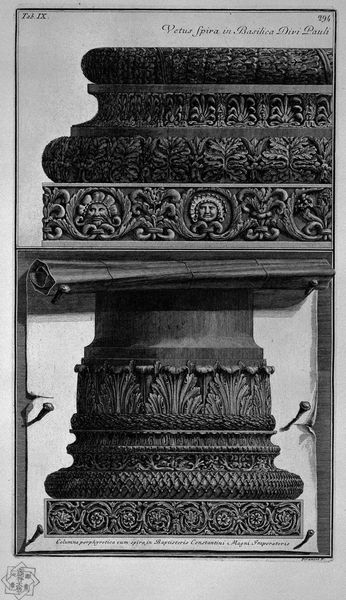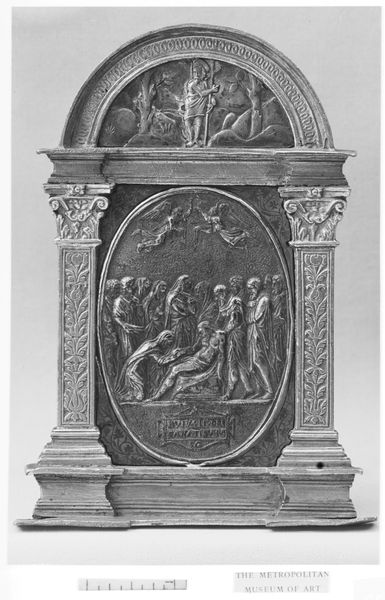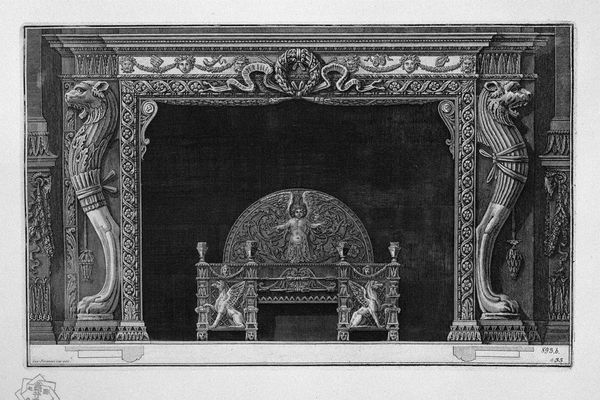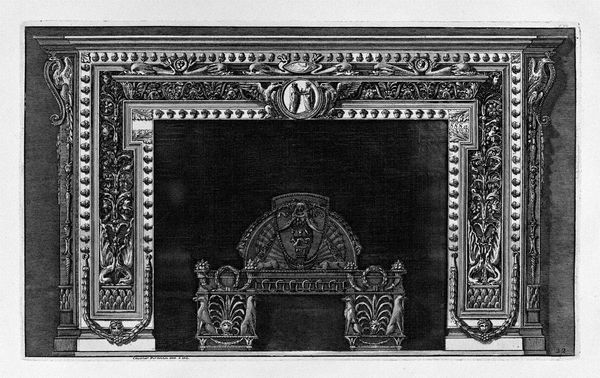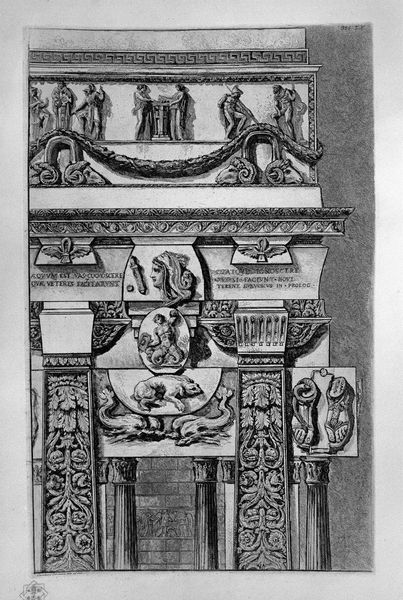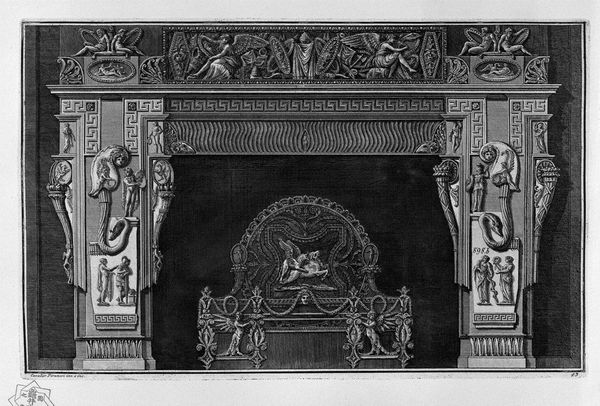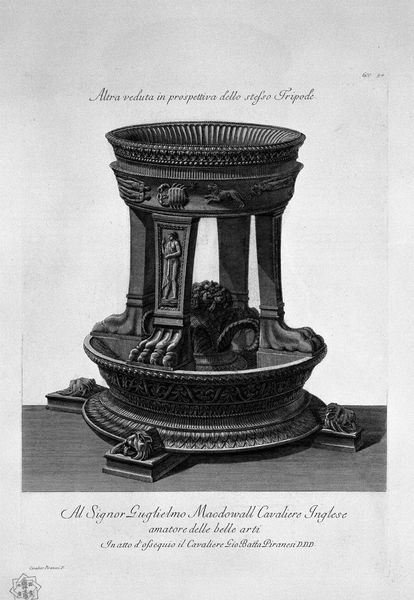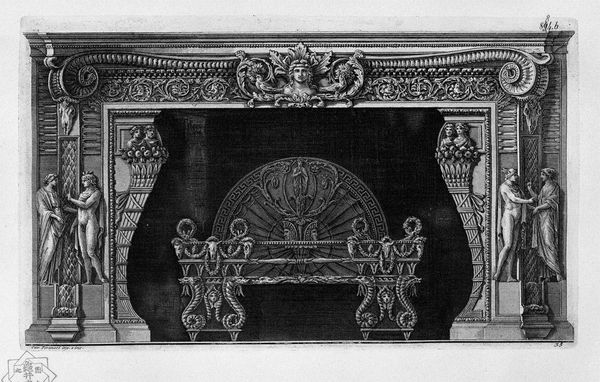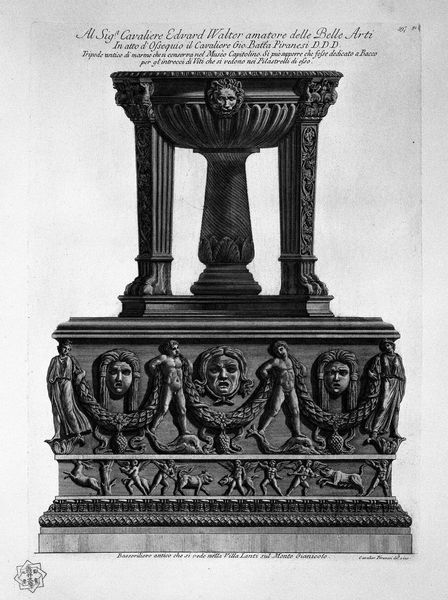
drawing, print, etching, engraving, architecture
#
pencil drawn
#
drawing
#
neoclacissism
#
baroque
# print
#
etching
#
pencil sketch
#
old engraving style
#
charcoal drawing
#
form
#
highly detailed
#
pencil drawing
#
geometric
#
column
#
line
#
engraving
#
architecture
Copyright: Public domain
Editor: This is Giovanni Battista Piranesi's etching, "Urn of marble Lucius Calvin." The incredibly precise lines and stark contrast give the whole piece a sense of classical authority, even grandeur. What do you see in this work, something beyond its initial imposing form? Curator: I see more than an urn; I see a carefully constructed cultural artifact laden with symbols, drawing upon collective memory. The urn itself signifies remembrance, a vessel for the past, quite literally. Note the ram's heads, ancient symbols of sacrifice and power, and consider how they interact with the portrait of Calvin on the lid. What feelings are stirred in you by the contrast of the human figure with these bestial images? Editor: I hadn’t considered the ram’s heads in that light. I was more focused on the sort of idealized serenity of the portrait, which seemed in contrast with the ornate, almost Baroque flourishes around it. Curator: Precisely! That tension is key. Piranesi is playing with Neoclassical ideals—the order, the reason—and the Baroque's emotional intensity. The inclusion of the dog suggests fidelity and remembrance, virtues to be emulated and remembered in the deceased. Ask yourself, how does Piranesi invite us to not just look at the urn, but to actively participate in the act of commemoration and even to perhaps emulate virtue? Editor: I see now! It's about actively shaping how the past is remembered, and for what reasons. Curator: Yes, the work is a layered experience of memory, artistry, and meaning, and is very deliberately designed to influence future generations’ relationship to this object and to history. Editor: It’s fascinating how much depth there is in what initially seemed to be just a straightforward depiction of a marble urn. Curator: Exactly. Piranesi shows how images become vessels of emotion and ideology, shaping how we understand our world, even today.
Comments
No comments
Be the first to comment and join the conversation on the ultimate creative platform.
